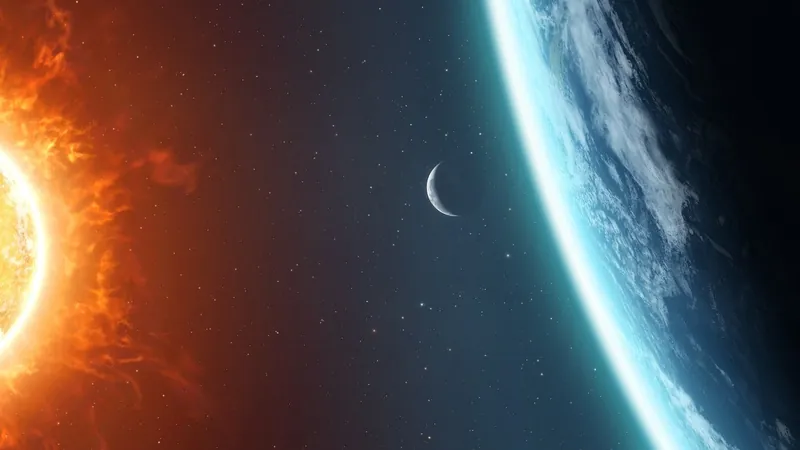
The Fascinating Distance to the Moon: What You Need to Know!
2024-10-06
The Intriguing Distance to the Moon
When it comes to the moon, one of the most intriguing questions is: just how far away is it? While many may think the answer is straightforward, the reality is that the distance between Earth and our celestial neighbor is more intricate than simply stating a number.
Average Distance and Variations
The average distance from Earth to the moon is often cited as 384,400 kilometers (or 238,855 miles), a figure confirmed by experts like Craig Hardgrove, an associate professor of Earth and space exploration at Arizona State University. However, this distance isn't constant due to the moon’s elliptical orbit. It varies significantly between two specific points: when the moon is at its closest (perigee), it measures about 356,470 kilometers (221,500 miles) away, while at its farthest point (apogee), it stretches to around 405,600 kilometers (252,000 miles).
Cosmic Perspective
In an interesting cosmic perspective, during apogee, all seven other planets in our solar system (Mercury, Venus, Mars, Jupiter, Saturn, Uranus, and Neptune) could theoretically fit in the distance between Earth and the moon when their diameters are totaled, measuring approximately 380,016 kilometers (236,100 miles).
Measuring the Distance
The ability to measure these distances accurately can be attributed to the Apollo missions from the 1960s and 1970s. Astronauts left retroreflectors on the moon's surface, which allow scientists to send high-powered lasers to bounce off and calculate how long the light takes to return. This method has immensely improved our understanding of the moon’s position in relation to Earth.
Visual Changes in Appearance
Interestingly, the moon's appearance can also change depending on its distance. It shines 30% brighter and appears 14% larger during its closest approach, a phenomenon commonly referred to as a "supermoon." Conversely, at its furthest distance, it’s known as a "micromoon." While both phenomena occur in alignment with the lunar cycle of approximately 27 days, they aren't directly linked to the moon's phases.
Mission Considerations
While the average distance is sufficient for general knowledge, specific missions—like landing spacecraft on the moon—demand much more precise measurements. Fortunately, lunar missions face less distance variation than missions to Mars, which can vary by 56 million kilometers (35 million miles), compared to the moon's 50,000 kilometers (31,000 miles) fluctuations.
Planning Moon Missions
The subtle differences in distance can influence travel time, but experts like Hardgrove emphasize that other variables—such as trajectory, landing conditions, and solar light—play a more significant role in mission planning.
The Moon’s Gradual Drift
Moreover, we are at a unique point in history concerning the moon’s position. Noah Petro, a project scientist from NASA’s Lunar Reconnaissance Orbiter, notes that the moon has been drifting away from Earth for over 4 billion years. This gradual distancing means that today we’re fortunate to experience spectacular celestial events, including total solar eclipses when the moon perfectly aligns to block the sun.
Conclusion
So, next time you gaze up at the moon, remember: it’s not just a shimmering orb in the night sky. It's a fascinating body, continually drifting and revealing secrets about our cosmic neighborhood!


 Brasil (PT)
Brasil (PT)
 Canada (EN)
Canada (EN)
 Chile (ES)
Chile (ES)
 España (ES)
España (ES)
 France (FR)
France (FR)
 Hong Kong (EN)
Hong Kong (EN)
 Italia (IT)
Italia (IT)
 日本 (JA)
日本 (JA)
 Magyarország (HU)
Magyarország (HU)
 Norge (NO)
Norge (NO)
 Polska (PL)
Polska (PL)
 Schweiz (DE)
Schweiz (DE)
 Singapore (EN)
Singapore (EN)
 Sverige (SV)
Sverige (SV)
 Suomi (FI)
Suomi (FI)
 Türkiye (TR)
Türkiye (TR)